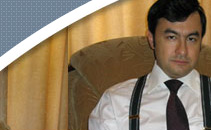FORTUM and NORTAM: Similarity Between Trademarks.Benefiting from the distinctive name of a well-known product by adding a prefix or suffix or changing one or more letters to create a similar name has become a common business tactic. However, due to the vigilant approach taken by many organizations, this practice is under attack. In Glaxo Group Limited v Manjit Patel (2007 (34) PTC 109 (Del)) the Delhi High Court considered the deceptive similarity between the marks FORTUM and NORTAM.
Facts
Glaxo Group Limited is incorporated and registered in the United Kingdom. The second plaintiff, GlaxoSmithKline Pharmaceuticals Limited, is incorporated and registered in Mumbai. Both plaintiffs are members of the GlaxoSmithKline group of companies.
Glaxo operates a global business manufacturing and marketing pharmaceutical, medicinal and healthcare products. The present case concerned Glaxo's statutory and common-law proprietary rights over the trademark FORTUM, and the violation of that trademark by Manjit Patel, director of Shantam Pharmaceutical Pvt Ltd.
Glaxo claimed that the trademark FORTUM had been registered in India since 1981 in respect of antibiotic and antibacterial preparations and substances, and that it is the exclusive owner of the mark in this category of goods. In 2004, through market investigations, Glaxo became aware of the use of a deceptively similar mark, NORTAM. The market investigations indicated that the product manufactured and marketed by Shantam under the trademark NORTAM was nofloxacin, a prescription drug which is prescribed as an antibiotic for chest, urinary and abdominal infections. Therefore, Shantam was marketing identical goods under a trademark similar to FORTUM.
Glaxo filed suit for a permanent injunction to restrain Shantam from using the trademark NORTAM and from manufacturing, selling or offering for sale medicines or antibiotic preparations under that mark. Glaxo argued that the mark NORTAM was visually, phonetically and structurally similar to its own mark FORTUM. It contended that the use of the NORTAM mark was designed to create confusion within the trade and in the mind of the public, with the dishonest intention of exploiting and taking unfair advantage of the goodwill and reputation of the FORTUM mark, both in India and internationally. Glaxo further stated that it takes care to ensure the quality and standard of its products, and it was unsure of the quality and hygiene levels to which products sold under the NORTAM mark were subjected. Glaxo's arguments were not contested by Shantam as Patel did not reply to the suit or appear in court to refute the allegations.
Decision
The court held that Shantam was not entitled to manufacture or sell its products under the mark NORTAM in light of the facts that (i) Glaxo produced as evidence its trademark registration certificate for the mark FORTUM, and (ii) Shantam had previously given an undertaking to withdraw all goods and packaging bearing the mark NORTAM and to cease using the mark. Therefore, the court granted a permanent injunction restraining Shantam from manufacturing, selling or offering for sale medicinal products under the trademark NORTAM.
Comment
Visual, phonetic and structural similarity between trademarks often forms the bedrock of trademark disputes. The question of whether a mark resembles another so much as to be likely to deceive or cause confusion is decided on the facts presented to the court, as well as the impression left by both trademarks on the minds of consumers. Although two trademarks placed side by side may exhibit various differences, the overall impression left on consumers may be the same. In the present case, Glaxo supported its claim of deceptive similarity by referring to a line of judgments establishing visual, phonetic and structural similarity between two trademarks through the addition of a prefix or suffix, or the replacement of one or more letters in the word mark.
The courts have made it clear that a trademark is infringed if, following a critical comparison of two trademarks, a person seeing the marks separately at different times retains the same impression.
"International Law Office"
| 



